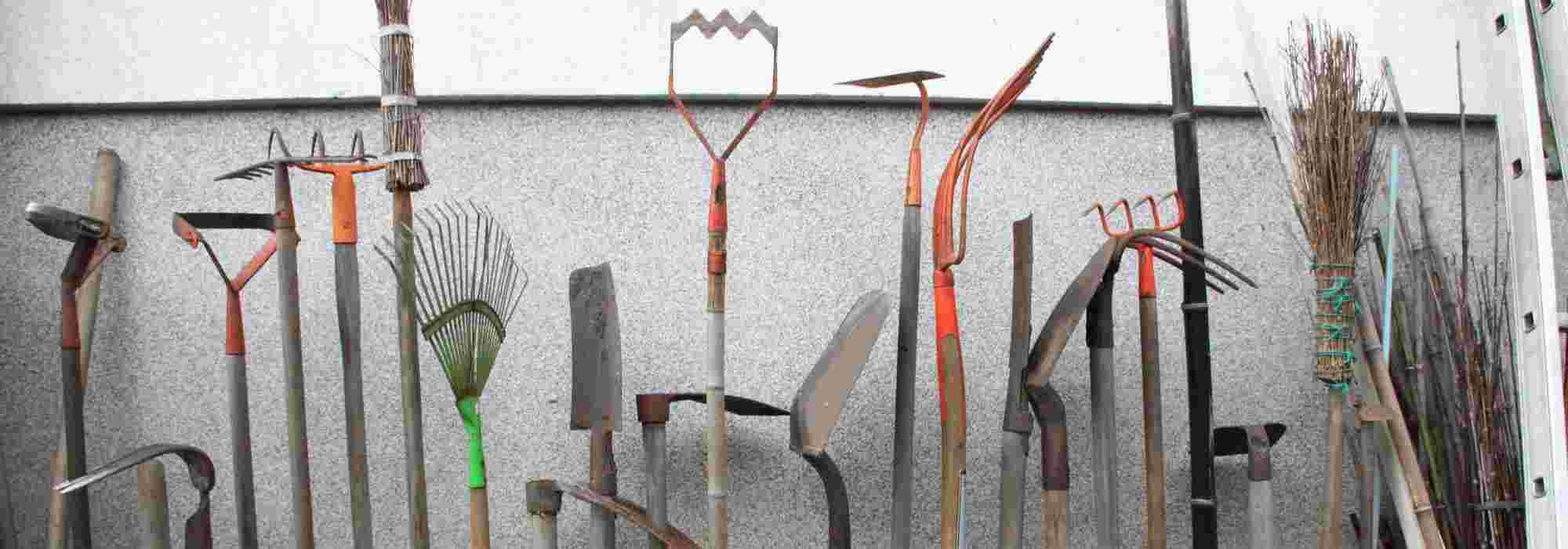
Garden tools: essentials
Getting started
Contents
When starting out in gardening, we are often bewildered by the abundance of different tools spilling over garden centre shelves. Should I buy this or get that? Is that oddly named tool really useful? It’s hard to find your way when you don’t know much and want to take up gardening. To help you choose, we’ve put together a list of ten essential gardening tools — truly, truly indispensable!
Spade, spading fork and mattock: for digging and more...
“Little holes, little holes…” First essential gardening tool: spade, which allows digging planting holes and mixing and loosening layers of soil. But it is also used to
There are two interesting variants of the standard spade: the spading fork and the louchet.
The spading fork or digging fork is a tool whose blade is not flat but made of four straight tines: it allows loosening without turning layers of soil but also dividing perennials. It’s also a good solution in heavy, stony soils.
The louchet is a kind of spade with a narrower, longer blade. It is easier to use than a spade in very heavy, clay soils. The louchet also allows moving bushes.
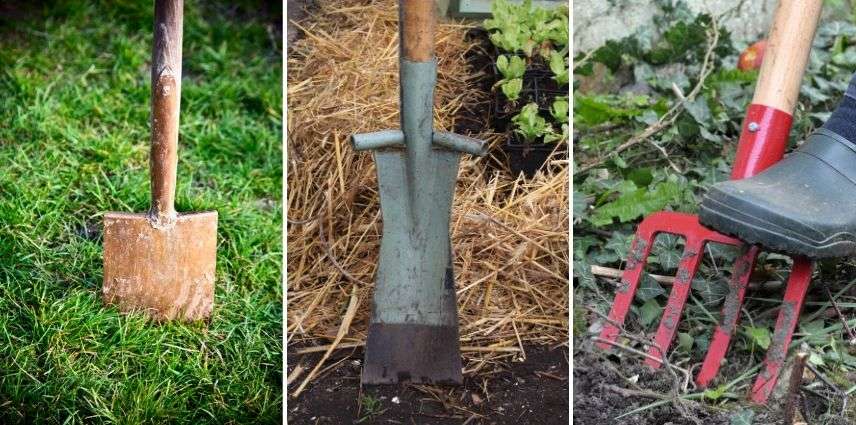
From left to right: spade, louchet and spading fork
To discover:
- our range of spades, louch ets and spading forks
- Olivier’s advice on our YouTube channel: Spade, spading fork, louchet: how to choose?
- Olivier’s advice sheet: “What is a louchet for?”
Transplanting trowel
A transplanter is a gardening tool that looks like the unlikely offspring of a hand trowel and a mini-digger.
This small hand tool allows breaking up crusted soil, mixing potting compost or fertiliser but also, and above all, digging small planting holes. Its name comes from the fact that this small tool also allows “transplanting” small plants from one place to another. They come in all sizes and at all price points.
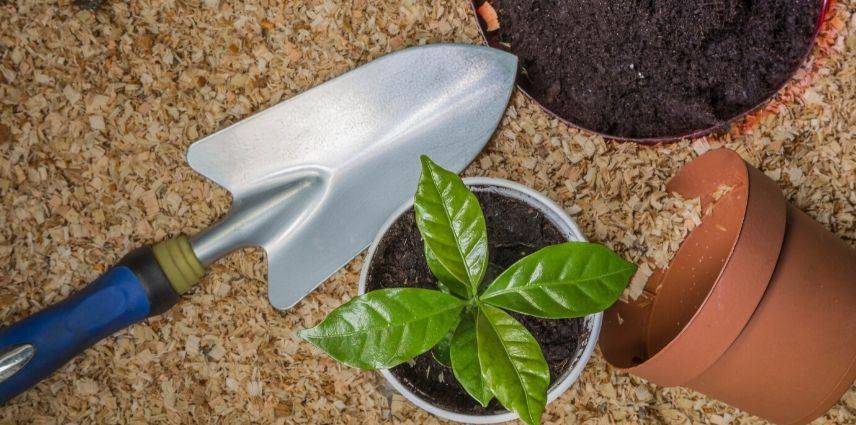
Transplanter
Discover all our advice to help you choose your dibber and transplanter.
Discover other Digging and cultivation garden tools
View all →Available in 1 sizes
Available in 1 sizes
Available in 1 sizes
Available in 1 sizes
Available in 1 sizes
Available in 1 sizes
Available in 1 sizes
Available in 1 sizes
Serfouette: ultimate multifunctional tool
Serfouette is a versatile, essential multifunctional gardening tool. Different models exist: with blade, point, tine or hook. It can also be found with long handle, semi-long handle or, most often, very short handle, used as hand tool.
Two metal parts make up the serfouette depending on model and therefore different binary names: blade and tongue, blade and point, blade and tine… Here is what these different elements are used for:
Panne (blade) is a kind of flat blade about 80 mm long; it is used for weeding by hoeing, for digging small holes or for cultivating soil.
Tongue or point is mainly used to make sowing furrows or to superficially loosen soil.
Claw or hook tines are used to aerate soil around plants. Personally I find the best combination is: blade + tines. Blade can replace tongue for furrows if you use the tool at a 45° angle.
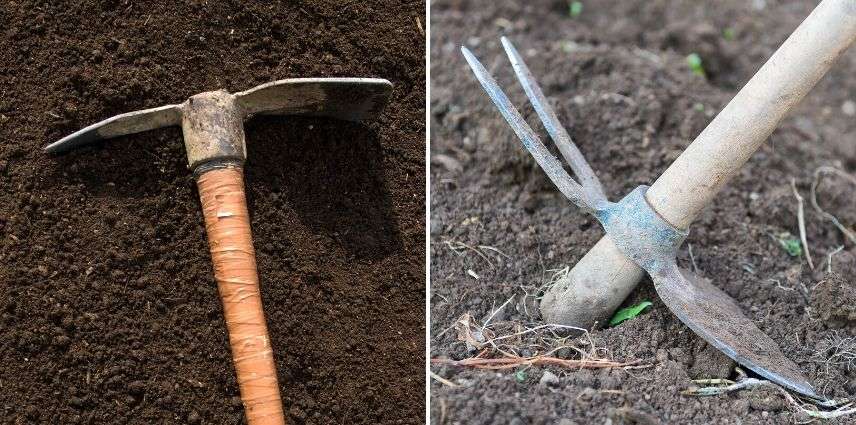
Hand hoes
Read also
Main gardening tools and their functionsHoe and pickaxe: two sturdy tools for tough jobs
The hoe is paradoxically little known among gardeners and is becoming rare in garden centres. Yet it is widely used around the world. It is a multifunctional tool made up of a steel blade on a handle in wood. These blades come in different sizes but bear in mind that a wide blade will be more effective in light soil while a narrower blade will be better for heavy or hard-to-work soils. There are also some very rare variants where the blade is fitted with teeth.
The hoe is ideal for stirring, crumbling soil, breaking its crust, earthing up potatoes, weeding, hoeing, digging trenches and planting holes.
The pickaxe is quite different from the hoe. However, this tool does resemble the hoe in the way it is handled and in its construction. The pickaxe proves indispensable for loosening and digging in extremely hard, stony soil.
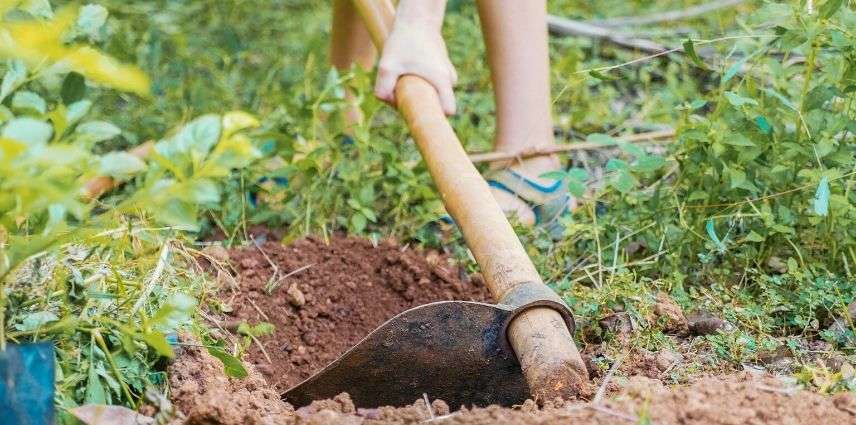
Hoe
Hoe: to reduce watering
A hoe is a tool used for… hoeing. Admittedly, but what does that mean? In fact the term biner comes from Latin, “to do twice“. The hoe is therefore used to loosen the soil a second time after it has been worked with a spade or a digging fork. But hoeing is also carried out throughout the season to aerate the soil between crops. According to the old saying “one hoeing is worth two waterings“: hoeing indeed allows water to be more readily available for plants, hence reduced watering. The hoe is also used for weeding, that is to say cutting down the “mauvaises herbes” between your plants.
A hoe consists of a metal blade and a wood handle: the two forming an angle more or less acute.

Hoe
Garden claw or claw hoe: preparing soil before planting
Garden claw or crook (also “four-tooth”) is a tool resembling a fork whose tines have been bent to form a 90° angle with the handle. The tool thus looks like an animal’s paw, hence its common name “claw”.
Garden claw is used to loosen soil, break surface crusts and large clods but also to gather small stones, clumps of herbs, as well as pulled-up “weeds“. This tool is perfect for refining soil after spading and hoeing and just before raking.
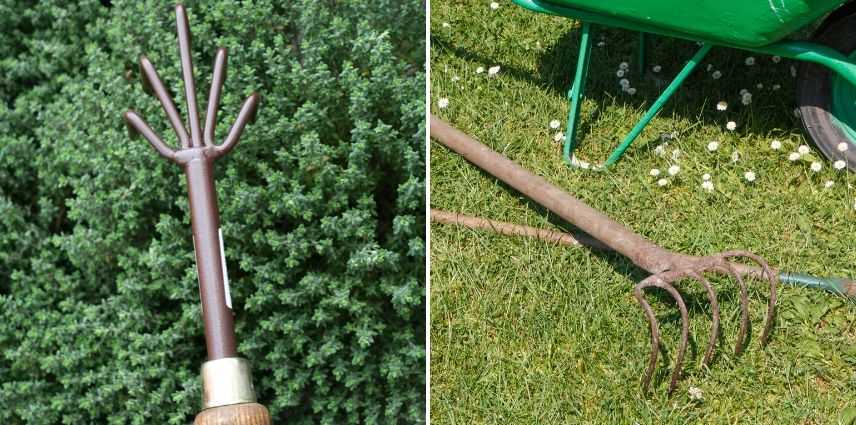
Claw and crook
Rake(s): to add the finishing touch
There are different rakes; the term refers to several distinct gardening tools. There are rakes for refining soil, for gathering leaves, for aerating and removing moss from short grass meadows and also rakes for gravel. We will focus on only two types of rake.
Rakes used to refine soil before sowing consist of a crossbar fitted with metal teeth at 90° attached to a handle most often in wood. This tool produces a very fine soil texture, resulting in a perfect substrate for germination of the finest seeds.
Rakes for gathering herb or dead leaves consist, on the other hand, of flexible tines arranged in a fan, themselves fixed to a long handle. These rakes are very useful in autumn or for achieving an impeccable lawn after mowing.

Different rakes
Shovel: for filling in and moving
Shovel is a very useful tool for moving loosened materials: sand, potting soil, compost and even freshly dug earth. It consists of a flat blade, metal or otherwise, more or less turned up at the edges, mounted on a long handle. But not all shovels are the same and they should be described according to their uses.
Shovels known as “round-point” or “digging shovel” are designed to penetrate deeply into soil or a pile of material to be shovelled.
While those called “square-headed” remain more on the surface as they are specifically designed to scrape surfaces. They are wider than the former type so can carry larger loads, making them heavier and trickier to handle.
Finally, “dished-head” shovels have a flanged blade allowing them to hold all kinds of materials effectively, even loose ones such as gravel.
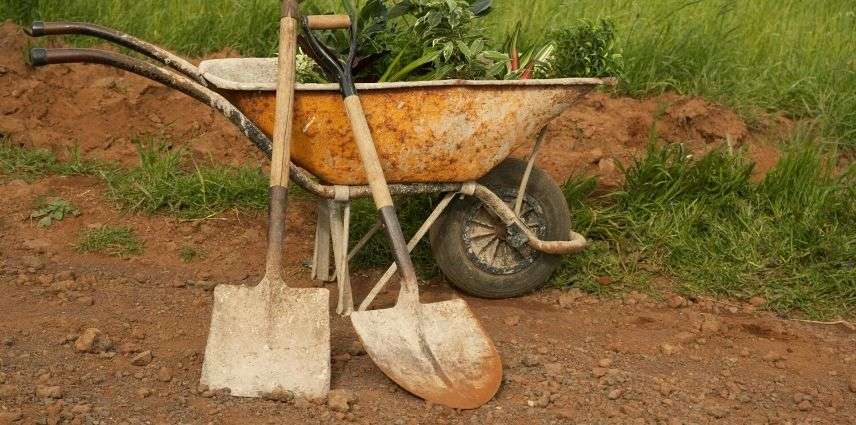
Shovels
Weeding knife: small but sturdy
This tool is a kind of long-bladed knife used, as its name suggests, for weeding the garden. Handling is simple: just push the knife into soil at the base of the “unwanted herb” to be pulled out. With a wrist movement, you can then lift the plant straight from the root. And job done! This tool is very effective for adventive weeds with a taproot, such as dandelions, for example. Its only drawback is that it can only be used locally, in the vegetable patch or on the lawn, otherwise you risk spending your life doing it…
Because you will need to apply force, levering the weeding knife, choose one of the sturdiest models. A handle about fifteen centimetres long fitted with a thick steel “blade”, at least 2 mm thick, with a cutting length between 12 and 15 cm is preferable. The tip must be well sharpened to penetrate as easily as possible into any soil.
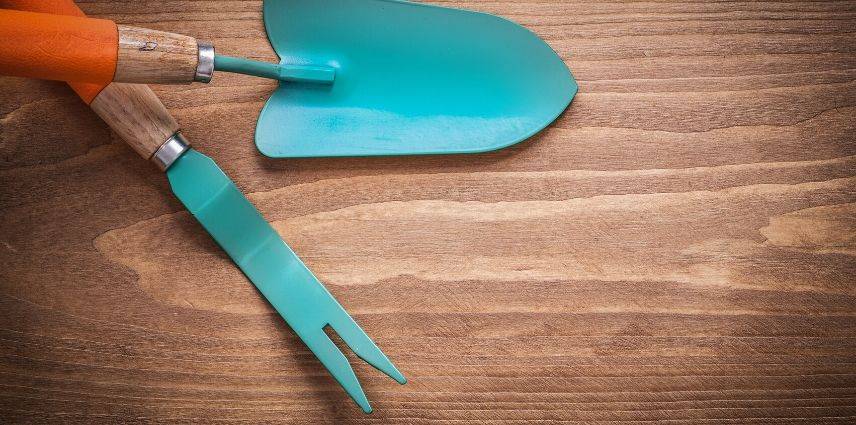
Weeding knife
Pruning shear: to slip into every pocket
If there’s one tool every gardener carries in their pocket, it’s the pruning shear! It’sthe ideal cutting tool for trimming all twigs, branches, shoots or stems that protrude, obstruct passage or, worse… break overall harmony of the garden.
There are two main categories: bypass (sharp-edged) pruning shears and anvil pruning shears.
The bypass pruning shear has a blade sharpened on one side that slides along an opposing blade. This produces a clean, precise cut. Bypass pruning shears are suited to working on living wood: for pruning roses, bushes, fruit trees…
The “anvil” pruning shear has a blade sharpened on both faces which strikes against the opposite, completely flattened “blade”, the anvil. This type of pruning shear can cut thicker shoots but should really be used only on dead wood. Indeed, the “anvil” pruning shear crushes part of the branch, which will cause problems for the plant later.
You can also choose between spring-loaded pruning shears and ratchet pruning shears. The latter are ultimately more tiring than the former because they require several squeezes for a single cut. A small revolution in pruning shears, some now feature a rotating handle to reduce joint fatigue and blisters. Initially a little disconcerting, they prove more comfortable in the long run.
They come in all sizes, so choose your pruning shear carefully so that it fits shape of your hand and especially whether you are right- or left-handed.

pruning shear
Discover :
- Our range of pruning shears
- Our advice sheet : How to choose the right pruning shear
Discover
- Discover the Japanese hoe or Japanese weeder, a versatile tool and Olivier’s favourite.
- Also read our article: Gardening for beginners: how to choose the right tools?
- Subscribe!
- Contents
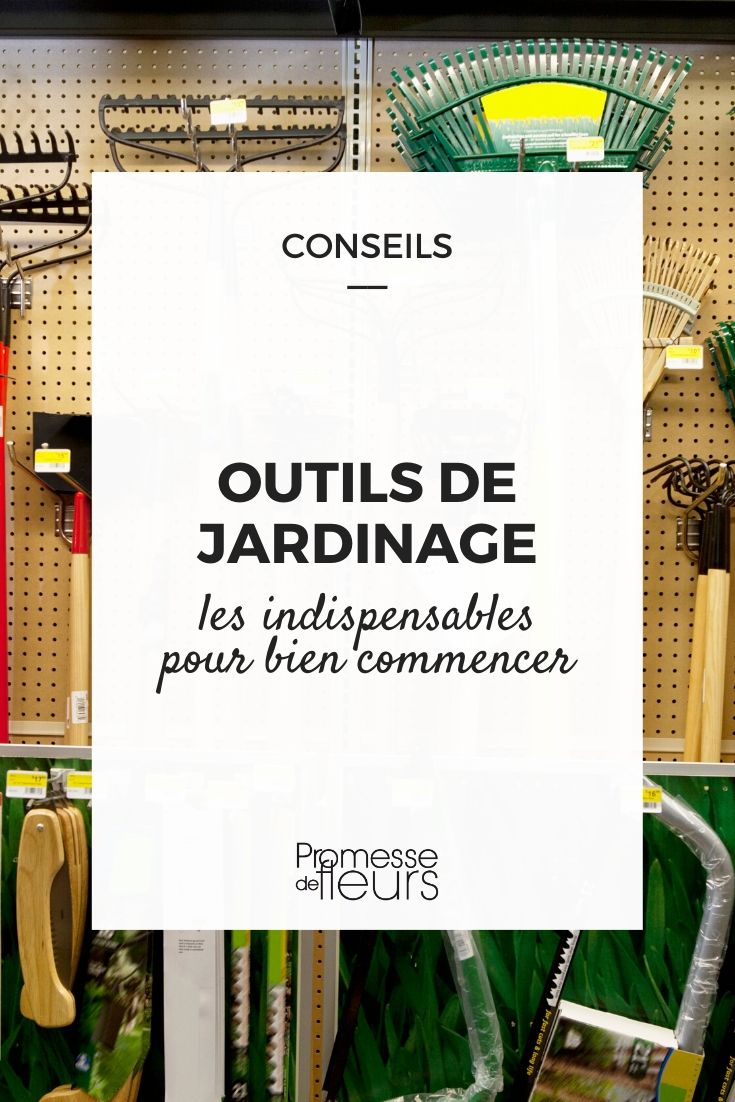































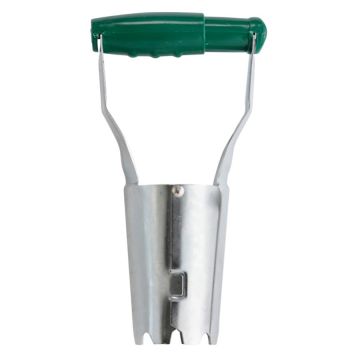
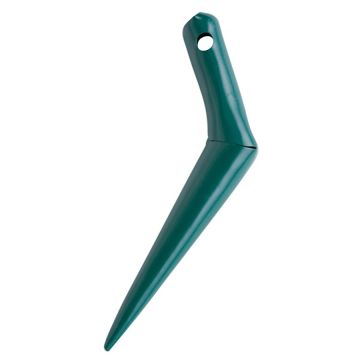
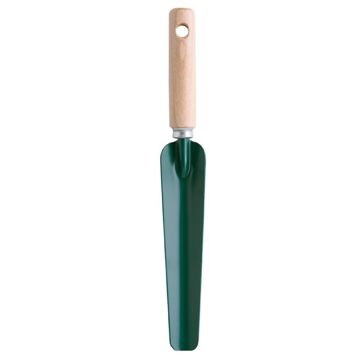
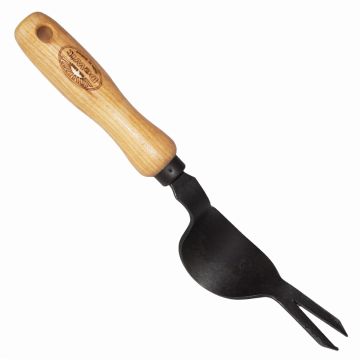
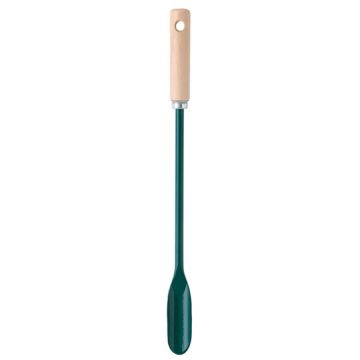
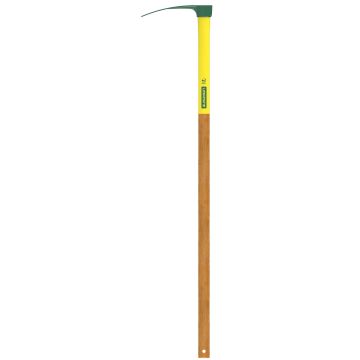
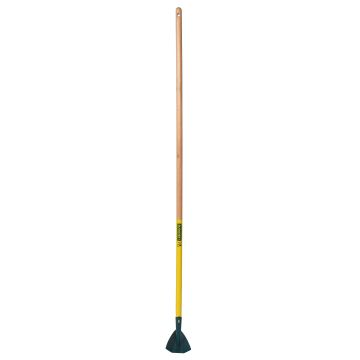

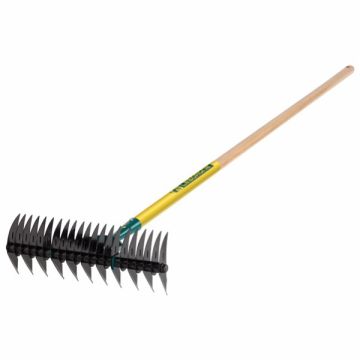
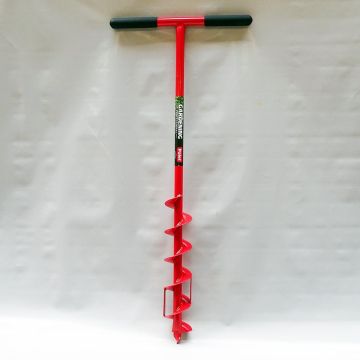
Comments